#Anaphalis margaritacea
Text
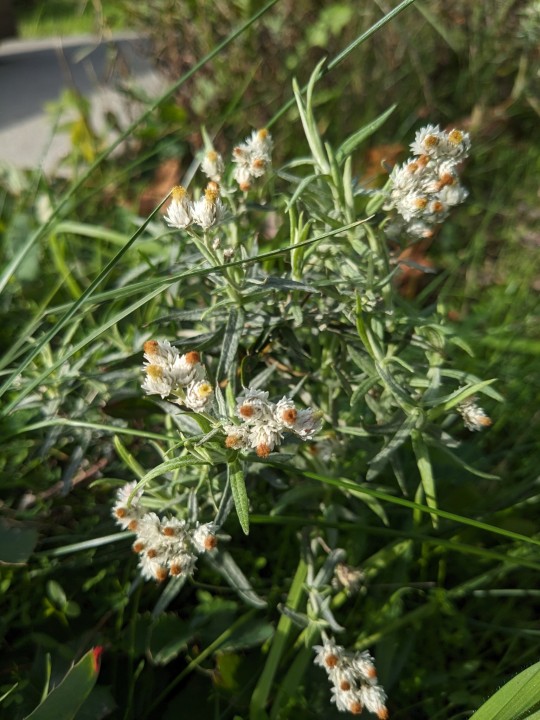
Pearly everlasting living up to its name by still being in bloom mid-october
14 notes
·
View notes
Photo

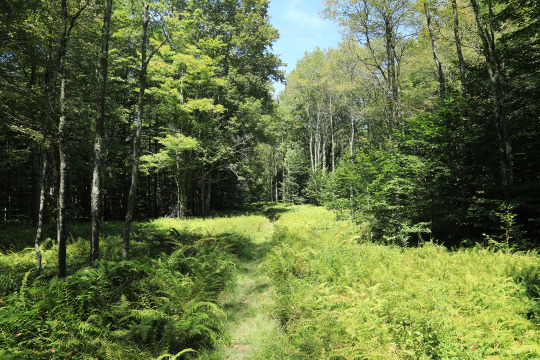
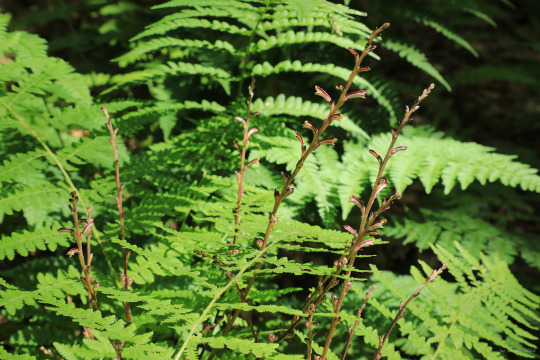

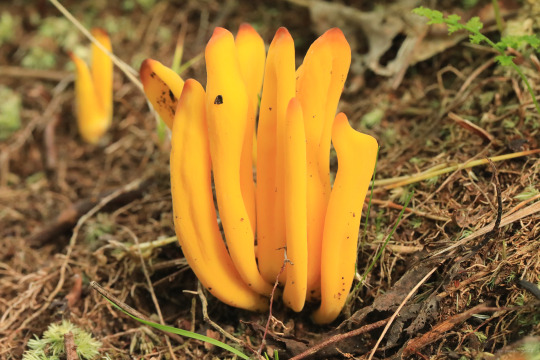

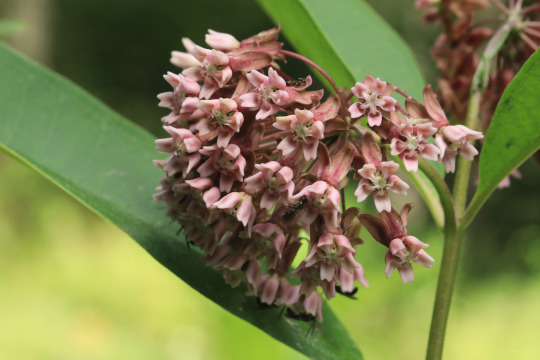

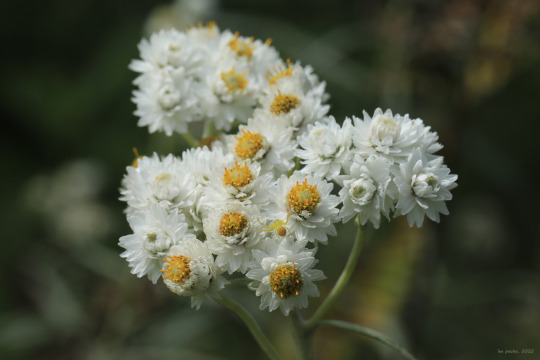

Canaan Valley National Wildlife Refuge, Part 1. Had Allegheny Power gotten its way 40 years ago, the land included as part of this idyllic refuge would today be the muddy bottom of a lake formed by damming the Blackwater River. The power company proposed turning the largest and most botanically-diverse high-elevation wetlands complex east of the Rocky Mountains into a “recreation destination” (e.g., overpriced tourist trap similar to nearby Deep Creek, Maryland) so it could execute a sketchy pump and release hydroelectric scheme. Thankfully, the US Army Corps of Engineers refused to issue a permit, and the nation has been since been rewarded with its 500th national wildlife refuge.
From top: beechdrops (Epifagus virginiana), a really unusual parasitic plant that draws its nutrients from the roots of the American beech tree; golden spindles (Clavulinopsis fusiformis), also known as spindle-shaped fairy club, a glorious late summer coral fungus; great spangled fritillary (Speyeria cybele), a common and lovely member of the Nymphalidae family that practically begs to be photographed; common milkweed (Asclepias syriaca), which blooms late into August at the higher elevation of the valley; Monarch larvae (Danaus plexippus), in their fifth instars; pearly everlasting (Anaphalis margaritacea), a fabulously-beautiful late summer aster much beloved by the dried flower industry; and the stingbean-like seed pods of Indian hemp (Apocynum cannabinum), one of the bittersweet bellwethers of summer’s end.
#appalachia#vandalia#west virginia#allegheny mountains#canaan valley#canaan valley national wildlife refuge#tucker county#epifagus virginiana#beechdrops#clavulinopsis fusiformis#golden spindles#spindle-shaped fairy club#speyeria cybele#great spangled fritillary#asclepias syriaca#common milkweed#danaus plexippus#anaphalis margaritacea#pearly everlasting#apocynum cannabinum#indian hemp#wildflowers#flora#summer
53 notes
·
View notes
Text

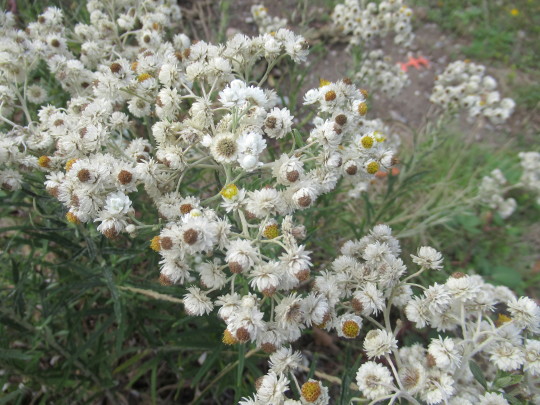
Anaphalis margaritacea (Western pearly everlasting)
There are over 100 species of��Anaphalis but only Anaphalis margaritacea is native to North America. It is widespread across most of Canada, the United States and Northwestern Mexico. This species also has native, wild populations throughout Europe and the the Far East. This healthy specimen was found growing on an empty building site. Just what this plant loves: full sun and poor soil.
Western pearly everlasting is dioecious, meaning that the pollen-producing (male) and seed-producing (female) flowers are borne on separate plants. The flowers are either entirely staminate (producing pollen) or functionally pistillate (mostly producing just seed, but with a few staminate flowers present). Thus the female flowers have a brilliant 'back-up plan' which ensures that, even if there are no male plants in the vicinity, there is still a way to produce the next generation of Western pearly everlasting.
#flowers#photographers on tumblr#pearly everlasting#native plants#dried flower arrangements#fleurs#flores#fiori#blumen#bloemen#Vancouver
104 notes
·
View notes
Text
Prairie Days
Originally posted on my website at https://rebeccalexa.com/prairie-days/.
I’m in the middle of my fall peregrinations, currently staying with family in the Missouri Ozarks as my base of operations while I do some exploring of the area, and get up to my preferred flavor of trouble. Which, of course, includes volunteering.

Ozark Rivers Audubon Nature Center
I actually got to do a little back home at Willapa National Wildlife Refuge right before I left town. They’re doing some coast meadow habitat restoration at the South Bay Unit, and so a whole pile of us showed up Wednesday before last to spend a few hours digging up invasive plants cropping up in some patches that had been intentionally planted with natives like early blue violet (Viola adunca), yarrow (Achillea millefolium), and pearly everlasting (Anaphalis margaritacea). I confess I didn’t get any pictures because I was A) pretty preoccupied with the upcoming trip, and B) nothing makes me zone out more than sitting with a trowel digging up weeds for hours at a time. By the time I get back the “nice” weather (aka warm and sunny) will likely be done for the year, but I’m hoping for more opportunities to get back out there.
But that certainly wasn’t the end of my habitat restoration efforts for the month.
For the past couple of years, every time I come into Rolla, MO I stop at the Ozark Rivers Audubon Nature Center to see if they have any upcoming stewardship activities. They’ve done a beautiful job of restoring the remnant tallgrass prairie and oak savanna there and protecting the oak-hickory forest and that surrounds them, but invasive plants being what they are there are always more to be removed as the seed bank keeps new generations popping up.
This time around we were out in the prairie/savanna area with a bunch of folks from the officer training program down at Ft. Leonard Wood just down the highway. The objective was to remove as much of the autumn olive (Elaeagnus umbellata) as possible; this invasive shrub with a silvery underside to its green leaves can quickly shade out native prairie plants, and doesn’t offer local wildlife nearly as much food. Prescribed burns help knock it back, but some more resilient specimens manage to resprout, and of course there’s that pernicious seed bank in the soil.

Autumn olive
Most of these were much too large to simply pull up, so the most effective way to get rid of them was to go out in teams of two. One person uses loppers to cut the plant down as close to the ground as possible, and the other immediately dabs herbicide on the fresh stump, which then kills the roots and keeps the plant from regenerating. It’s a minimal use of the product when compared to spraying wide areas of foliage, and only treating the stump with a quick, targeted dab minimizes the chance of accidentally affecting surrounding native species. And since it doesn’t cause disturbance to the soil like digging would it’s less likely to stir up seeds that would then be even more likely to sprout.
I know herbicides are super controversial–they’re not my favorite thing either. But as I wrote in my chapbook Habitat Restoration: What It Is, Why It’s Important, and How to Get Started, judicious and careful use in habitat restoration is one of the few times I’m okay with it, and it’s about the only way to reliably get rid of some invasive plants permanently. Given that invasive species removal is one of THE best ways to make an ecosystem more resilient in the face of climate change, habitat restoration has to be a big priority now and going forward. While I am not ignorant of the environmental impact of routine overuse of herbicides in agriculture and yards alike, the targeted use of them in habitat restoration is definitely a “lesser of two evils” situation that deserves more nuance.
While autumn olive was the main target, we also managed to remove a few other pernicious invasives. Callery pear (Pyrus calleryana) was easy to spot with its leaves still bright green amid the various browns, golds, and reds of native vegetation. We also got rid of some privet (Ligustrum spp.), and a little Japanese honeysuckle (Lonicera japonica) winding its way through the meadow. While there’s still plenty to go around for the next volunteer crew, we did make a big dent in that area.

New England aster
It wasn’t just the invasive species in evidence, though; there were plenty of native plants to enjoy along the way. One of the most prominent was field goldenrod (Solidago nemoralis nemoralis), and while some had gone to seed others still had a touch of yellow. There was a splash of purple here and there from New England aster (Symphyotrichum novae-angliae), and delicate white snakeroot (Ageratina altissima) edged the treeline. Amid inland oats (Chasmanthium latifolium) and other native grasses, young northern red oaks (Quercus rubra) and white oak (Quercus alba) added splashes of scarlet. It was incredibly peaceful to be immersed in these beautiful species and more.
At a time when it’s all too easy to feel overwhelmed by the enormity of environmental devastation on multiple fronts, there is something empowering about getting my hands in the dirt, so to speak. No, removing some invasive shrubs from one remnant prairie won’t save the whole world. But it helps that ecosystem become more resilient, and gives the native species there a better chance. It also makes that place a better illustration of the grasslands that were much more common in this portion of the Midwest, and is an important reminder that it wasn’t always cornfields and cattle pastures.

Yarrow
On a microcosmic level, I just feel better after spending a few hours doing a little something good in the world. I felt better walking away knowing that native plants like this young yarrow I found beneath an autumn olive we removed will be more likely to thrive in the years ahead. I’ve absorbed some of the beneficial effects of being outside, too, and gotten a good bit of exercise at my own pace. And it’s good social time, too, in a setting that feels pretty darn comfortable, and we’re all united by a common interest in that moment. This is likely my last outdoor volunteer time of the year, but it was a great note to wrap things up on.
Did you enjoy this post? Consider taking one of my online foraging and natural history classes or hiring me for a guided nature tour, checking out my other articles, or picking up a paperback or ebook I’ve written! You can even buy me a coffee here!
#habitat restoration#invasive plants#invasive species#gardening#restoration ecology#ecology#herbicides#nature#environment#conservation#Missouri#Ozarks#prairie#tallgrass prairie#oak trees#oak#forest#wildflowers
34 notes
·
View notes
Text
More flowers from my garden!
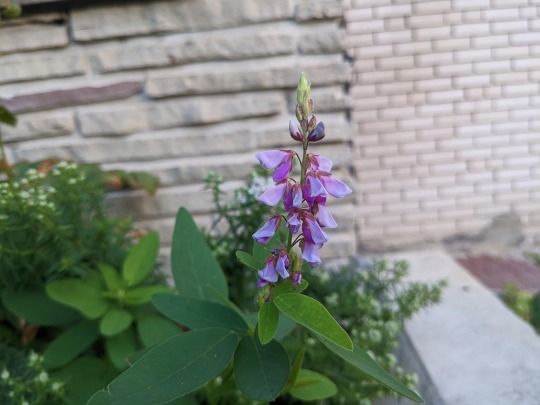
Desmodium canadense (showy tick trefoil)
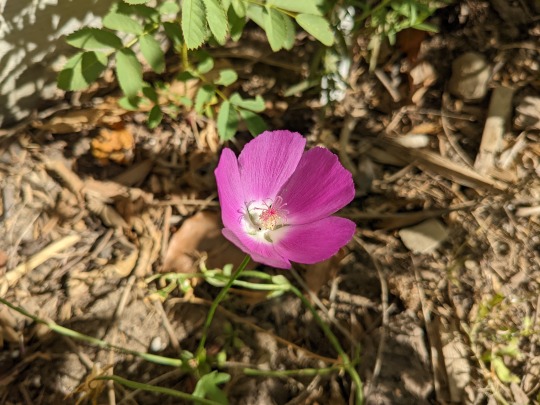
Callirhoe involucrata (purple poppymallow)

Pycnanthemum virginianum (Virginia mountain mint)
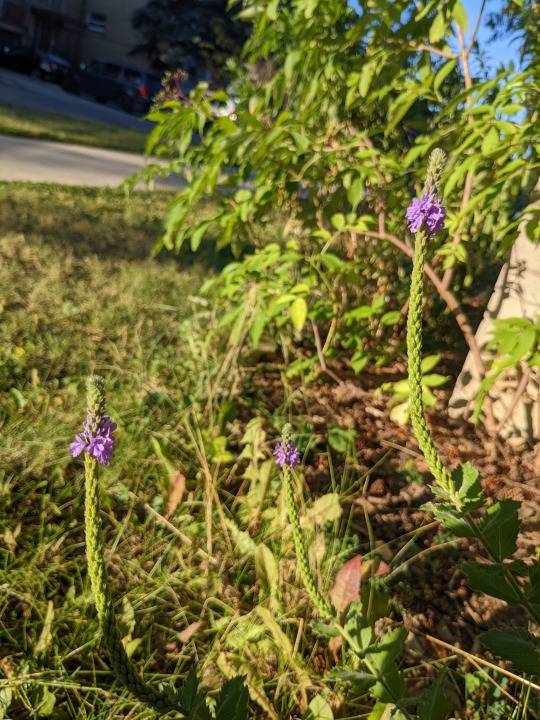
Verbena stricta (hoary vervain)

Eupatorium purpureum (sweet joe-pye-weed)

Monarda punctata (spotted beebalm)
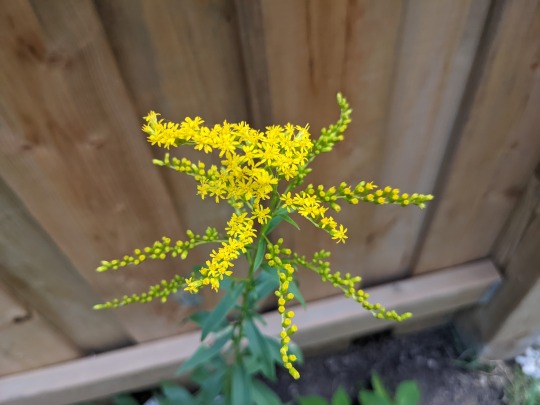
Solidago juncea (early goldenrod)
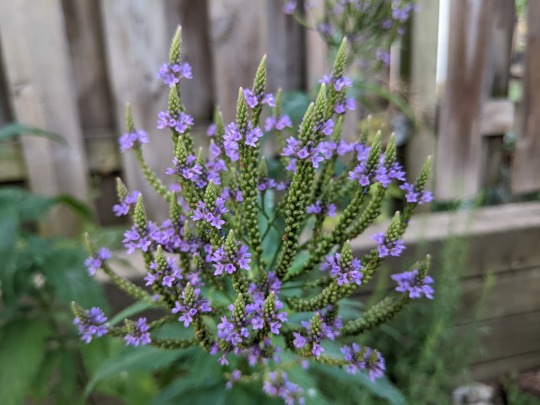
Verbena hastata (blue vervain)
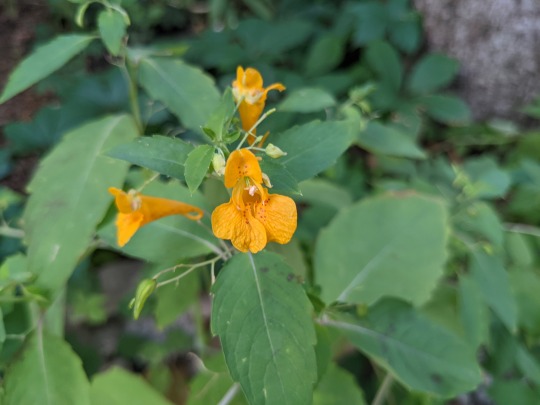
Impatiens capensis (spotted jewelweed)

Helianthus nuttallii (common tall sunflower)

Symphyotrichum ciliatum (fringed blue aster)
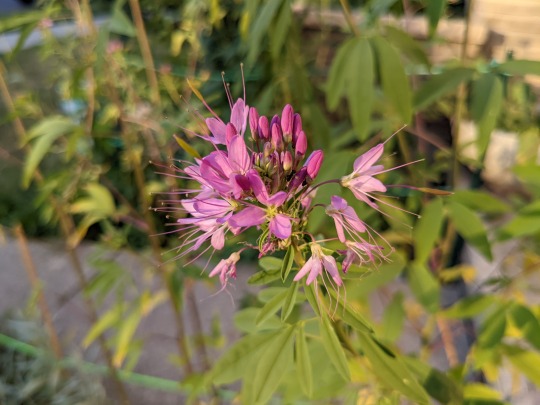
Cleome serrulata (Rocky Mountains bee plant)

Actaea racemosa (black snakeroot)

Helianthus pauciflorus (stiff sunflower)
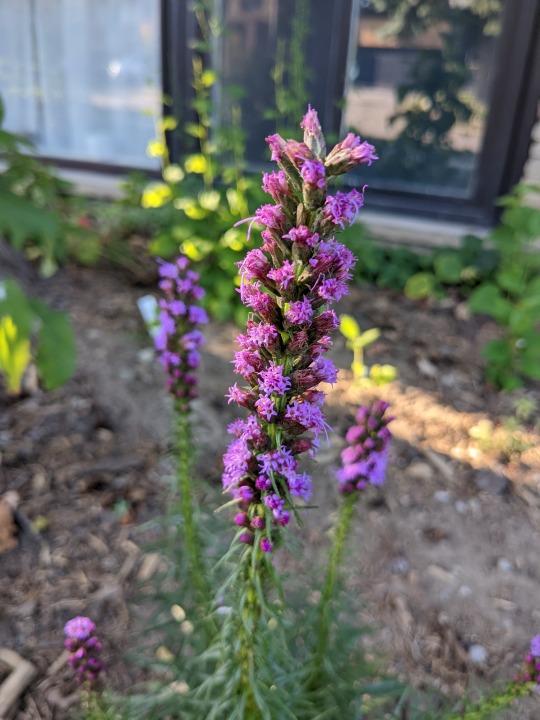
Liatris spicata (dense blazing star)

Hypericum punctatum (spotted St. John's wort)

Spiraea alba (meadowsweet)
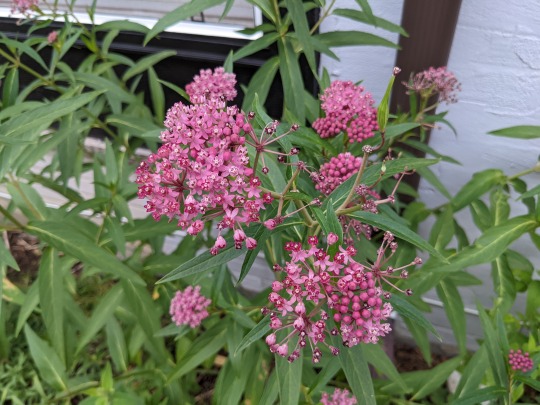
Asclepias incarnata (swamp milkweed)

Agastache foeniculum (anise hyssop)
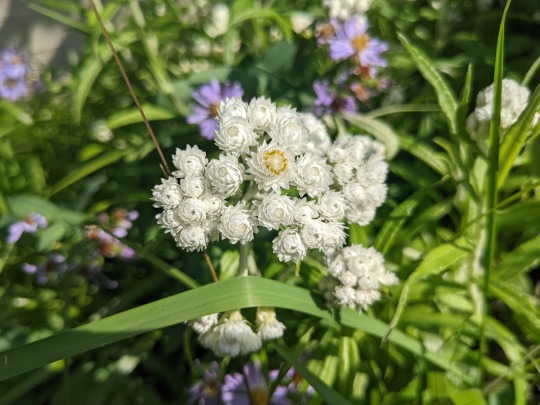
Anaphalis margaritacea (pearly everlasting)

Symphyotrichum laeve (smooth aster)
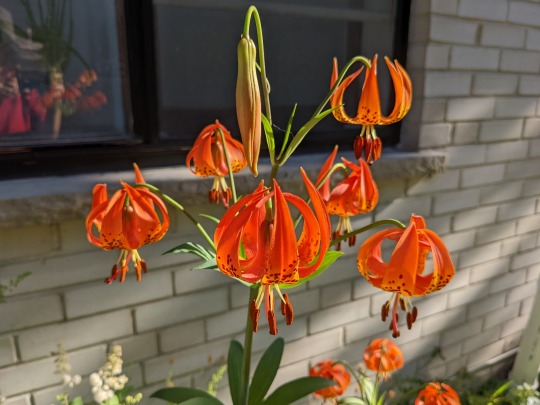
Lilium michiganense (Michigan lily)
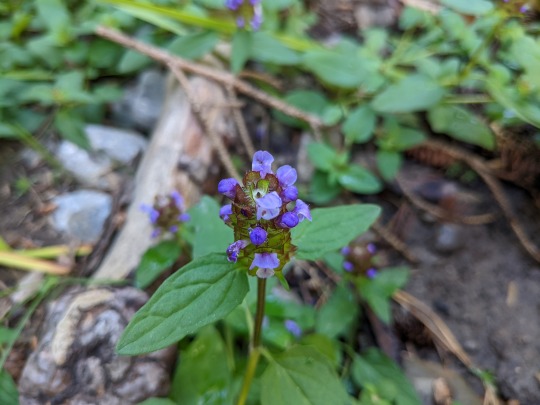
Prunella vulgaris ssp. vulgaris (common selfheal)

Symphyotrichum lanceolate (panicled aster)

Astragalus canadensis (Canada milk vetch)
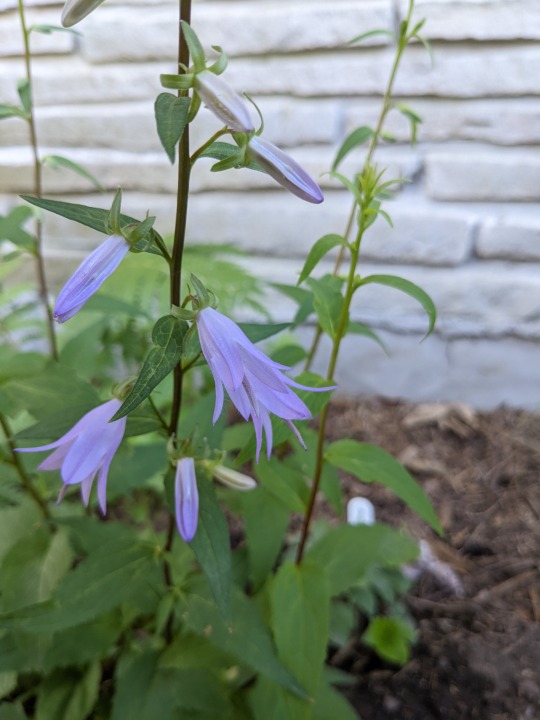
Campanulastrum americanum (marsh harebell)

Sambucus canadensis (common elderberry)

Mertensia paniculata (tall bluebells)
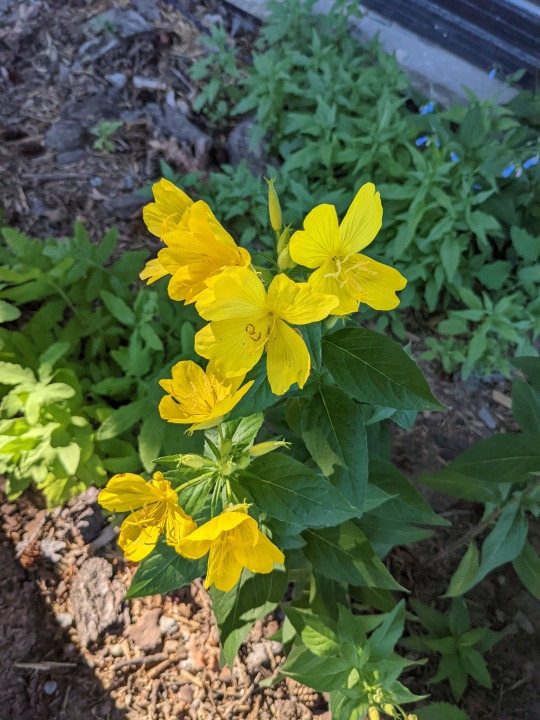
Oenothera fruticosa (narrow-leaved sundrops)

Lilium philadelphicum (wood lily)
And cut off again. lol
16 notes
·
View notes
Text
Pearly
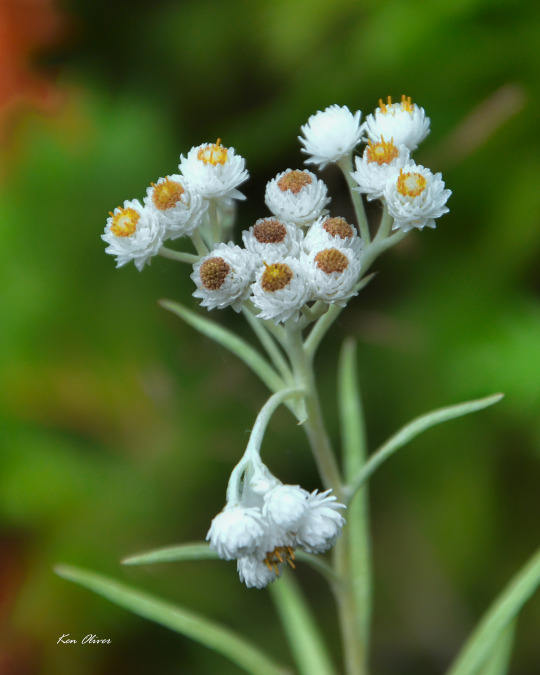
Anaphalis margaritacea (Pearly Everlasting)
©2022 Ken Oliver
#original photographers on tumblr#photography#nature#photographers on tumblr#nature photography#original photographers#original photography on tumblr#wildflowers#macro#pearly everlasting
8 notes
·
View notes
Photo
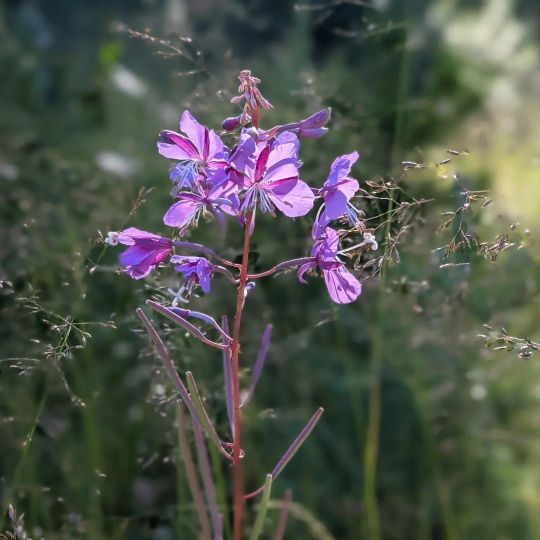
Wildflowers of Kananaskis - Fireweed - Anaphalis margaritacea - Aster - Fireweed - Alsike clover - Indian paintbrush - Tetrapogon #kananaskis #wildflowers #aspiringbotanist (at Peter Lougheed Provincial Park) https://www.instagram.com/p/ChU87d3uL8s2NeNL1Z7dVNBCaz03rRyOWwVWa80/?igshid=NGJjMDIxMWI=
8 notes
·
View notes
Text
Unconventional plants and herbs in witchcraft.
Often I find that herbs and plants relating to witchcraft online and even in a lot of books is centered around a specific set, I see the same herbs repeated and spoken about often. If you want to find information on “obscure” plants in witchcraft you have to DIG (or it just doesn’t exist). It’s not a bad thing, most authors are appealing to a general audience, reciting what they have learned, and following tradition, but I’ve found that I’m wanting to shift my focus of learning to more local herbs and plants (I mean, they are free to get after all). I’ve wanted to find uses for the plants I can forage around me, as they are often not mentioned. So if you live in the PNW (or more generally, North America), and want to learn more about the plants around you and how you can use them in your craft, follow along friends!
Entry one lies below.
Pearly Everlasting (Anaphalis margaritacea)

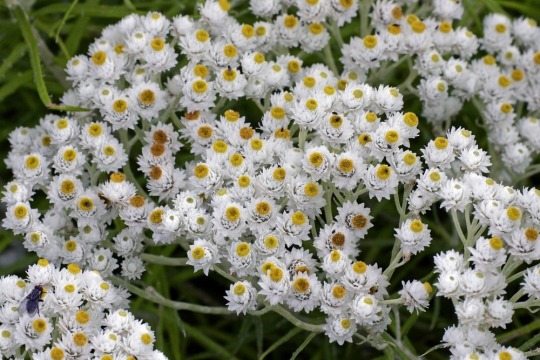
Note: Do not consume or use plants that you cannot identify with certainty.
General Information and History:
General info:
Native to North America, Drought tolerant, grows readily in: roadsides, clearings, meadows etc.
young plants and leaves are edible when cooked, but may be unpleasant due to the wooly nature of the underside of the leaves.
Best harvested before flowers fully open/mature, often before midsummer. After flowers mature, they can last until the first snows of winter! Hence, “everlasting”. (Or the fact that they dry beautifully, and then last quite a bit longer!)
History:
It was used medicinally by many First Nations, for example: The Nlaka’pamux used Pearly Everlasting as an influenza medicine. While Ditidaht healers rubbed the leaves on their hands to soften them.
It was named Pearly Everlasting due to the colour of the bracts, and how long the flowers last.
It is a commonly cultivated ornamental plant in some areas.
Used to be a common flower to leave upon graves, much less commonly used now in grave gardens.
Medicinal Information:
Note: use at your own risk. If pregnant/nursing, taking medications, or have medical conditions, contact a physician prior to use. Please be aware that medicinal herbs are meant to be used in moderation. This is NOT a guide to usage.
Possible Properties: anodyne, anti-inflammatory, antiseptic, astringent, expectorant, mild sedative.
Traditional methods of use: Tea, Poultice, steam bath, herbal smoke.
Used to treat: superficial wounds, colds and bronchial coughs, throat infections, headaches, etc.
Despite all this, Pearly Everlasting is seldom used in modern herbalism.
Usage in Witchcraft.
Now, as for the usage in witchcraft there obviously isn’t much widespread information, in cases such as this I like to follow the lead from other information on the plant (name, medicinal properties, factors of growth, history, personal experience, etc). as well as combine with other practices, such as colour magic. This is why other information on the plant is important to know, even if it’s not directly related to witchcraft. Please note that this is a personal correspondence. As such, you may see it differently or have different ideas. That’s okay too! Feel free to share them :)
Correspondences: longevity, healing, purification, and spirit work.
Other very important information
Some information is derived or cross referenced from: PLANTS OF THE PACIFIC NORTHWEST COAST Washington, Oregon, British Columbia & Alaska. (Paul B. Alaback)
This is a SUPERB field guide if you live in the area(s) mentioned and it carries a wealth of information. I HIGHLY recommend it.
For Pearly everlasting specifically, because of its status as an ornamental/garden plant in some places, its likely easier and safer to buy seeds to grow the plant rather than forage it. This has an added bonus of caring for and putting your energy into the plant straight from the beginning.
In regards to foraging:
Be safe, sustainable, and ethical when foraging. (Click the link)
ALWAYS positively identify before use. If you’re not 100% sure, don’t use it!
Be prepared for a possible negative reaction or allergy. When trying new things, try a small amount first.
Know the local area/the dangers (terrain, wild animals, incoming weather, etc) be prepared!
DO NOT take more than you need/can use. (This does not apply to invasive species)
Harvest from different locations if possible.
Do as little damage to the plant and grounds.
Use a mesh bag to collect in the case of mushrooms.
Make an effort to spread seeds from plants when harvesting if possible. (This does not apply to invasive species)
This post is not a comprehensive guide to Pearly Everlasting and it’s usage as a medicinal plant, it is a general overview of information that I have compiled, and not necessarily beginner friendly. Please treat it as such. Happy spell crafting! :)
#witchcraft#witch#witchy#witchblr#spells#herbalism#foraging#medicinal plants#witch community#garden witch#green witchcraft#green witch#kitchen witch#cedarbeing
4 notes
·
View notes
Photo

#anaphalis margaritacea#Botanical Garden of Hokkaido University#Sapporo#山母子#北海道大学植物園#札幌#smc PENTAX-A* 135mm F1.8
9 notes
·
View notes
Text
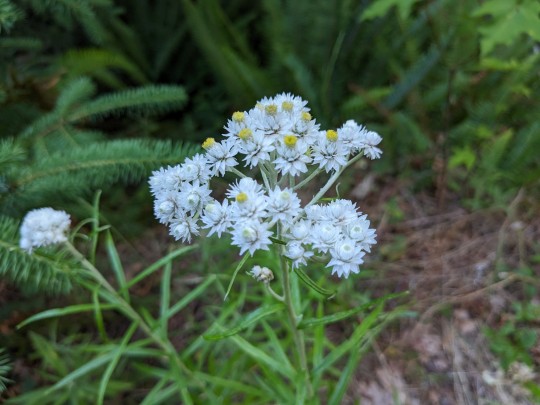
Anaphalis margaritacea was prettier in the wild than the pictures i had seen led me to believe!!!
12 notes
·
View notes
Photo

White-flowered Anaphalis margaritacea cover a bank
a garden design by: Piet Oudolf
#afotw#garden#white flowers#white#Anaphalis margaritacea#piet oudolf#naturalistic#Landscape Architecture#park
60 notes
·
View notes
Photo

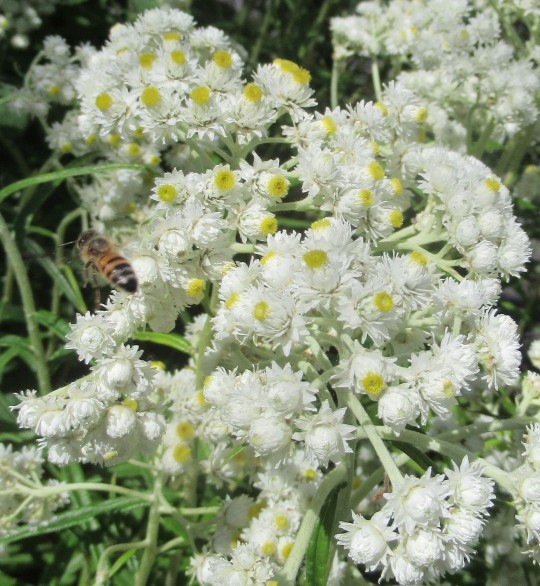
Anaphalis margaritacea (Pearly everlasting) and Apis mellifera (Western honey bee)
The Waggle Dance
In 1927, Karl von Frisch published a book called “The Dancing Bees”. In 1973, he won the Nobel Prize for deciphering the meaning of the Western honey bee’s ‘waggle dance’. When a honey bee finds a rich source of nectar, it returns to the hive and gives a little taste to a group of worker bees. Once it has assembled a crowd it does the ‘waggle dance’. The other bees then fly directly to the food source.
Frisch figured out that the direction of the dance indicates the direction of the food source and the duration of the dance shows the distance. He went on to discover that bees see in color and can understand simple geometric shapes. It is likely that this information is also communicated. Of the 16,000 known species of bees, only the Western honey bee demonstrates this behavior.
#tiny flowers#photographers on tumblr#pearly everlasting#honey bee#Karl von Frisch#fleurs#flores#fiori#blumen#bloemen#vancouver
79 notes
·
View notes
Photo
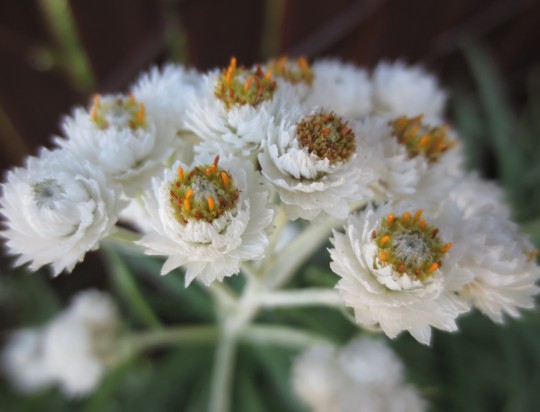
25 notes
·
View notes
Photo

Anaphalis margaritacea ヤマハハコ
#Anaphalis margaritacea#ヤマハハコ#alpine wildflowers#july#gassan#yamagata#japan#original photography#月山#山形#高山植物
3 notes
·
View notes
Text



Some flowers in the Kylämäki garden 💐☀️
#my posts*#plants#plantblr#photography#flowers#garden#flowercore#gardencore#cottagecore#plantcore#lily#lilies#anaphalis margaritacea#pearly everlasting
100 notes
·
View notes
